How safety improvements can help you to win at combat
First published: 10/9 2012 - Last update: 24/10 2012
|
Improved safety - a winning strategy by Henning Forbech |
|||
|
The combat rules are very strict on safety issues.
If your shut-off does not work or if engines separate from the lines you will get disqualified. A simple way to improve your results at competitions is to avoid getting disqualified. With some simple changes to your equipment you reduce the chance of getting DQ. Over time this will improve your results at competitions but it will also make combat events safer! Pilots are often disqualified on non-working shut-off systems and on the safety wire rule. It is easy to improve your results by minimizing the risk of getting disqualified on these rules. |
Index:
Shut-off systems Safety wire |
||
|
Shut-off systems: |
|||
|
At the 2012 World Champs in Bulgaria a quite high number of pilots were disqualified on non-working shut-off systems. Most of these DQ´s could have been avoided with a more reliable anti fly away device. This would not only have saved these pilots from a lost bout but it would also have made the combat competition a much saver event. All shut-off systems have a fail rate. Most systems in use today have a quite high fail rate. A simple way to improve the success rate of the "anti-flyaway device" is to use more than one system. If you use both a line tension design and a swing arm design you can make a radical reduction on the risk of shut-off failure. The two systems must be acting in serial e.g. the engine stops if just one of the shut-offs detects a fly-away. If the success rate of one system is 75% a double system would have a success rate of more than 90%! A shut-off system is mandatory but you are free to improve the reliability by using more than one system!! Some pilots might try to win a bout by "testing" your shut-off. You can improve your chances against this dangerous tactics by using very reliable shut-off systems. This helps you to win more bouts and it will help to reduce the use of this tactic. But it will also improve the overall safety for combat events. |
|
||
|
|
|||
|
Safety wire: |
|||
|
Many pilots are upset when they get disqualified on the safety wire rule. Often they have not realized how important it is to have a really strong connection to the engine. But the rule on safety wire is very clear: The engine must always stay connected to the lines. At the World Cup competition in Pazardzhik, Bulgaria (right before the World Champs) there was some discussion on the interpretation of the rules on safety wire. After a midair collision a model lost the engine and there was some confusion on how to handle this situation. Some pilots found that since no safety wire would ever be able to withstand a direct hit in midair collision there should not be a DQ in this situation. They found that it should be enough that the safety wire was intact at takeoff. Other pilots follow the rulebook more strictly and found that the pilot should be disqualified if his engine separate from the lines. The background for this rule is safety. Loose engines flying around can be very dangerous for pilots, mechanics, officials and spectators. The safety wire only makes sense if it remains functional, even in extreme situations. A safety wire that cannot withstand a collision is like a safety belt in the car that cannot withstand a collision. 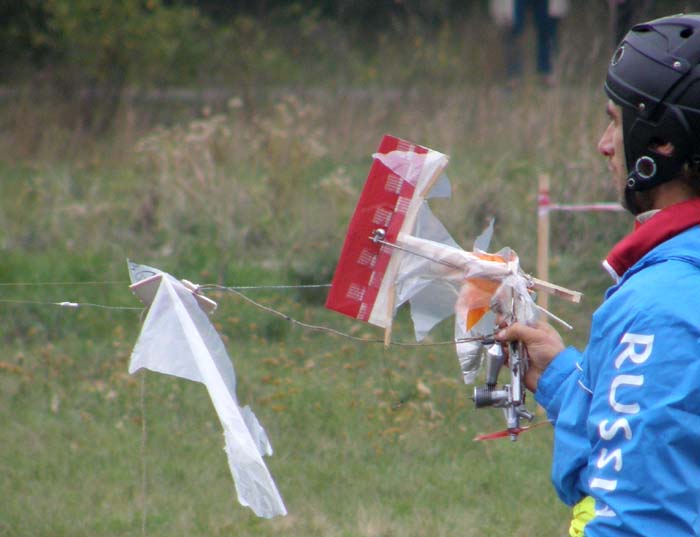 For many years a safety wire has been mandatory. First the safety wire had to be connected to the bellcrank axel. This did make sense in the old diesel days when the bellcrank was bolted on to the model. Over years the model design changed and since the early glow engine days the bellcrank has been mounted on a bar or tube through the center section. To comply with the original rule the safety wire has been connected to this bar instead of a bolt. This design did have some flaws. When a model was hit in the center section the wooden parts could break open and it was possible for the safety wire to slip off the bellcrank bar. 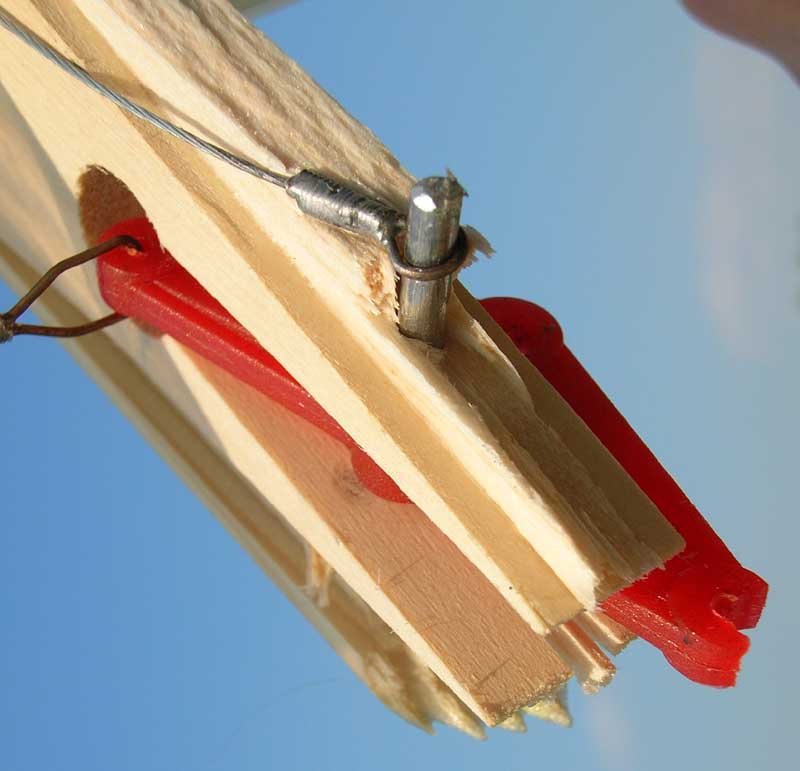
To solve this problem there have been a lot of clarifications to the rules and many attempts to persuade model manufactures to use a safer design. With the general update of the rules in 2011 the safety wire rule also got updated. The new rule focused on the fundamental function of the safety wire. To prevent the engine from flying away. The simplest solution was to specify that the engine should always stay connected to the lines. How the pilot would secure his engine could by his own free choice and his responsibility. If his engine - for whatever reason - should become detached from the lines he would get disqualified. Sometimes pilots can be very creative in bending rules. One dangerous strategy could be not to use any safety wire at all. A pilot could argue that as long as his engine is not separated from the model and lines his model does comply with fundamental demand in the safety wire rule. If his engine should become detached he would just accept the DQ. He might save some weight and work but he would put other pilots' security on jeopardy. To prevent pilots from using this risky solution it was necessary to require a wire from the engine to the model. To make sure this wire would have some effect it was also necessary to specify a minimum dimension and to check the connection with a pull test. It is important to understand that the 0,5 mm safety wire is a minimum requirement. Pilots are free to use a stronger wire, more than one wire or even use an additional Kevlar rope to reduce the chances of the engine flying away. Pilots that use better safety systems will not only have a lower chance of getting DQ but they will also help making combat a safer sport. You can reduce the risk of getting disqualified on the safety wire rule by using models with a stronger connection between the lines and the engine. Here are some ideas on how to improve your model design. On a traditional model you can replace the bellcrank bar with a bolt. This will reduce the chance of the safety wire slipping of the bar if your model gets hit right at the center. 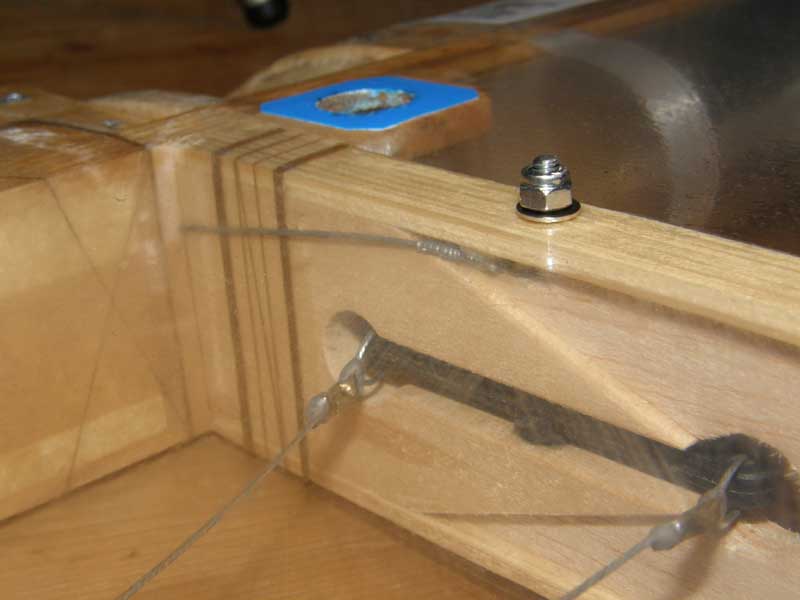
A plastic bellcrank may break apart in a midair collision and the lead out wires can be pulled out of the model. This would result in a DQ but it is easy to reinforce a plastic bellcrank with Kevlar. 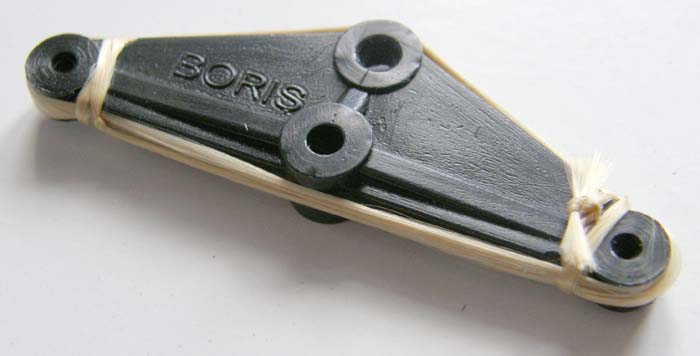 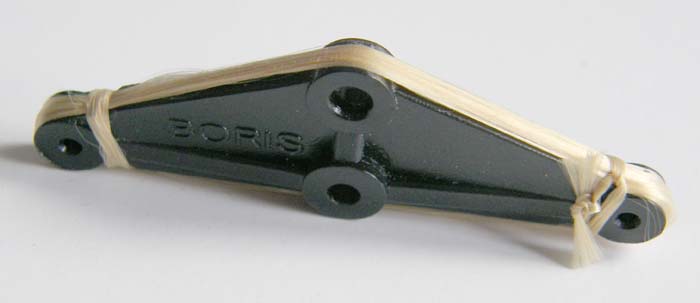
If your model is hit at the inboard wing there is a risk that both lead out wires are cut by the propeller. This will result in a dangerous situation where your model is flying away. Even if your shut-off is working you will get a DQ. Your engine is not connected to the lines!!! You can reduce the chance of this dangerous situation with a small change to your lead out wires. If you add a couple of small wire wrappings to the lead out wire close to the inboard tip the lead out wire cannot be pulled out through the lead out guides. 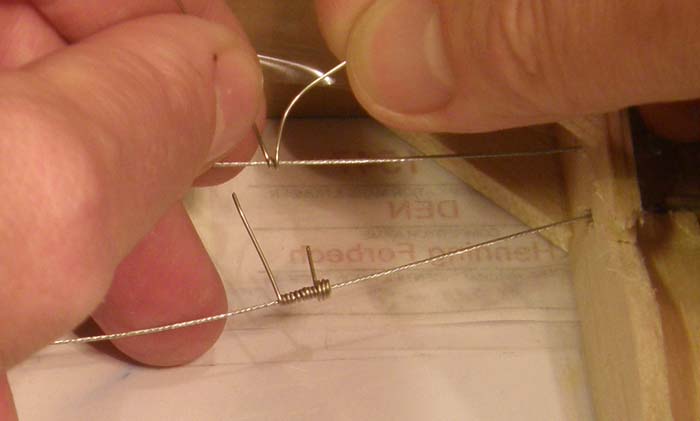 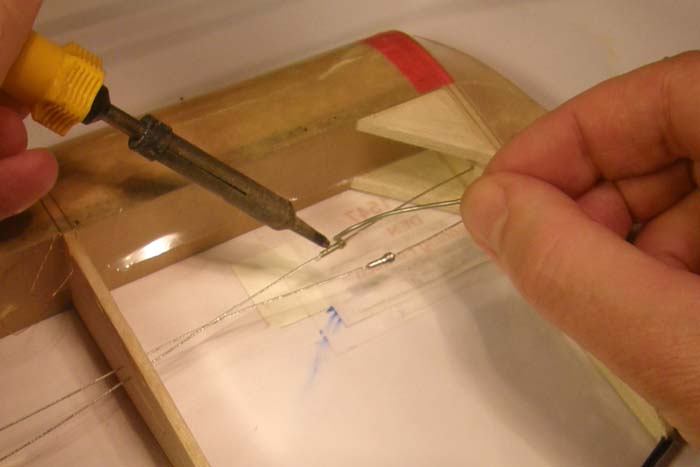 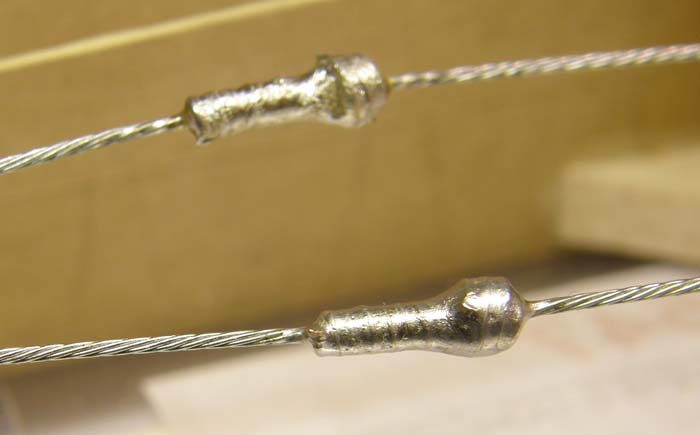
The lead out guides might need an reinforcement to be able to withstand the force from the lines. You might even build in a Kevlar string from the lead out guides to the center sections. 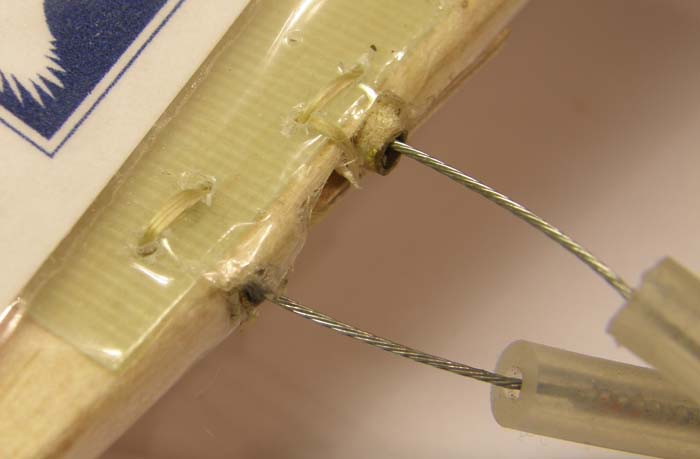
If this Kevlar string is built into the leading edge It will be well protected. There is a very low chance that both the lead out wires and this Kevlar sting will be cut in a crash. 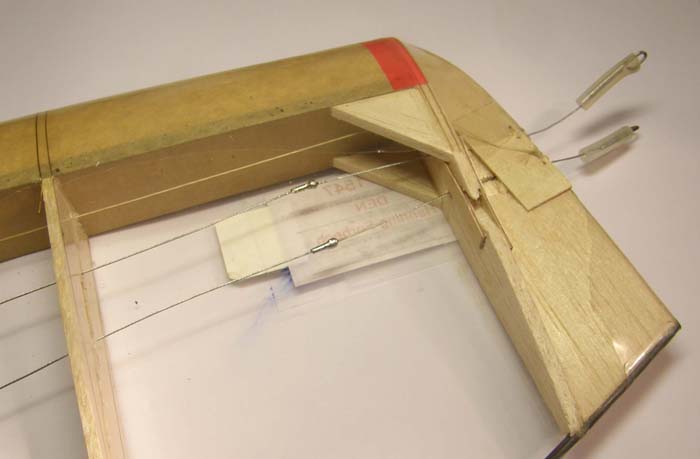
If you are not building your own models it can be difficult to make some of these changes. The easy way is just to ask you model provider to build models with improved security. That will give you better results in the future. |
|
||
|
-oOo- |
|||